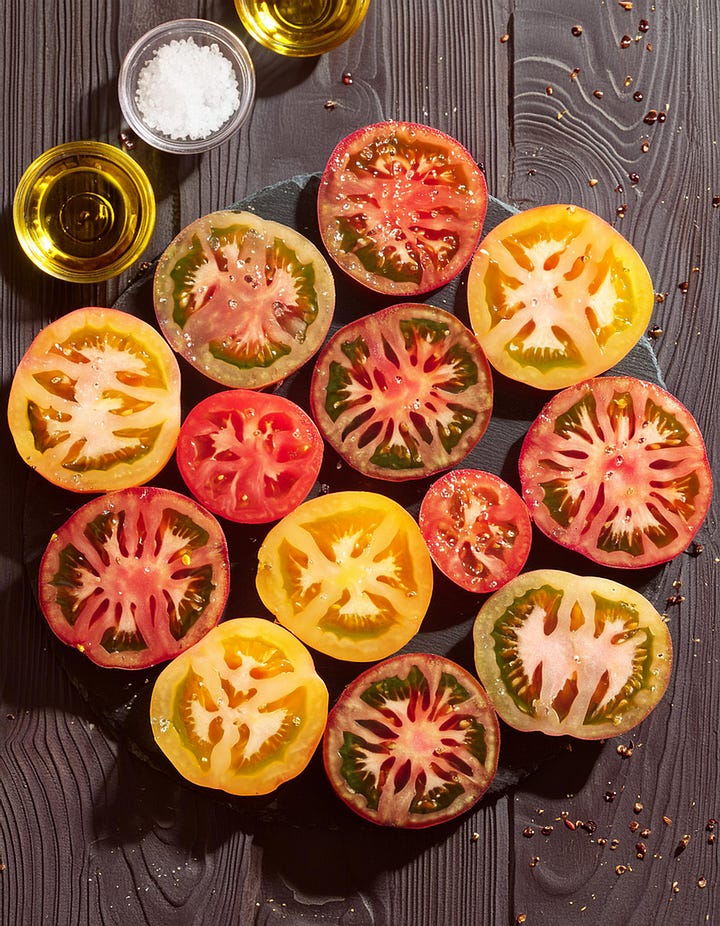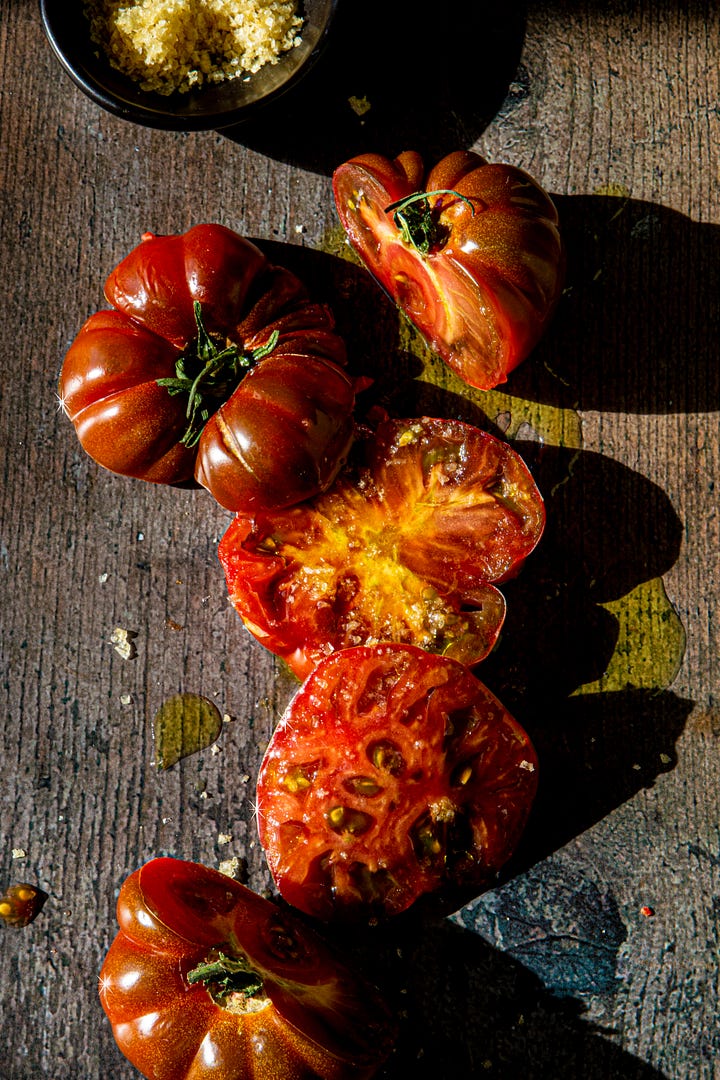Welcome to the Tuesday post for all subscribers, the second in a series about AI and how it affects the industry in which I work. Light stuff! On Friday, paid subscribers will receive a recipe for birthday cake ice cream as a palate cleanser, if you will. As always, thank you for being here.
First, a note. My hope with this mini-series is to dig into two parts of AI: first, the wonder of it all. I’m one of the AI-curious photographers, willing to experiment and use it to help streamline my workflow. It’s been helpful—truly, game-changing—and I’m curious to hear what non-photographers think about the way I use it. Second, as a food photographer and stylist, I’ve also been muddling over the ethics of AI’s use in food photography. Read part one here if you haven’t already.
As an artist and a freelancer and a taxpayer in the US, sometimes it’s hard not to feel like systems are working together behind the scenes to make my life more difficult. The launch of generative AI was one of those moments. Robot memes took over my Instagram feed. I was hit up by strangers on the internet to sign petitions. Many of my fellow photographers were, understandably, worried that their work was about to dry up and be given over to the AI-lancers. Overall, the mood was one of post-apocalyptic panic.
In the months and years that have followed, though, I think we’ve reached a tentative impasse. Yes, some clients got with the times and opted to use AI instead of photographers. Yes, there are deepfake images made by AI that are circulated around the internet every day. Yes, there are shady practices by the companies behind these AIs that compromise photographers and artists. All of that is important, to be sure, but it’s not what I’m here to talk about today.
Image generation is a phrase that feels threatening to me—in a way, I am an image generator, after all. But the threat, to me, goes deeper than a competitive threat. The danger here, in my opinion and in my field, which is all I can really speak to, is for the consumer.
Last year, I started doing extensive research for a piece on food styling. My working thesis was that food styling was a potentially thorny area, especially legally. I spoke with food stylists, clients, and even a lawyer who specialized in misleading food labels. The consensus was that most people expected photos of food—whether on packaging to portray a product, in cookbooks to portray a recipe, or in ~content~ to market a product—to be created with the actual sized product, the recipe made as it was written, or the product that could come out of any package. The other consensus was that most professionals had experienced or indeed performed breaches of that unspoken contract that were wildly beyond that reasonable expectation.
I still haven’t gotten around to writing that piece (although if you are an editor willing to publish it, hit me up!), but when I started working with generative AI, both to do edits and to create food photos from scratch, it occurred to me that the same question could be asked of this field. What are the implications, ethical and legal, of using artificial intelligence to create photos of recipes or to enhance food photographs?
The difficulty with relying on these generative programs (by which I mean, programs into which you type “chocolate cake” to get a picture of chocolate cake) to create photos of food is that you have very little control over the way the food looks in the final image. Sure, you can say “flourless chocolate cake” but is the image that is generated going to accurately portray that? I’m sure there are lots of prompt writers who are better than I am out there, but I had trouble even getting the olive oil to show up correctly in the photograph below.


When it comes to brands with products, there’s a whole other ball game at play when using generative AI to show off recipes that make use of your specific product. Not only will eagle-eyed consumers be able to spot inconsistencies in the recipe versus the final photo, but it can get you into tricky legal territory depending on how large of a component your products are in the recipes. Even using AI to edit photos, like I mentioned I frequently do, can get you into trouble if you’re relying on it to fix cracks in your cheesecakes or to make your crackers look bigger. Those are fixes that might make a better photo but that can mislead consumers.
I don’t know that the solution is here, and I’m definitely not claiming to be an expert in the field. But as I think about the way that AI is deployed now and how it might continue to grow in food photography, I can’t help but wonder what people like you think about how it’s being used. Let me know your thoughts below!
See you back here on Friday for ice cream!

